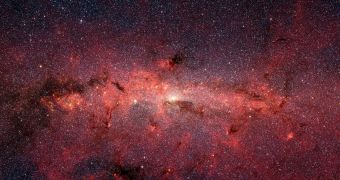Astronomers have discovered hundreds maybe thousands of extrasolar planets by now. Most of them were found with the help of Kepler space telescope, which, unfortunately has malfunctioned and can't continue its mission. The telescope looked for dimming of a star's light to determine whether a planet was present.
When a planet passes in front of the star, it obstructs some of the light coming from it. Measuring this light provides information about the planets that orbit the star.
But, while this method has been the most successful, in terms of volume if nothing else, in finding new planets it's not the only one.
Astronomers using several Earth observatories have used the microlensing phenomenon to detect a planet 25,000 light years away, in Milky Way's bulge.
The event, dubbed, MOA-2011-BLG-322 happened in 2011 and was confirmed by the Microlensing Observations in Astrophysics (MOA in New Zealand/Japan), Optical Gravitational Lensing Experiment (OGLE in Poland) and Wise (Israel).
The event showed a planetary anomaly indicating the presence of a second large mass, besides the star itself, bending light from another star behind it. Large bodies, like stars and planets, distort the space around them which in turn distorts light coming through that region.
Gravity acts as lense in this case and astronomers can use the effects to see further into the universe, in the case of large galaxies, or find out information about the object that is causing it, as is the case here.
The event indicated that a large planet orbits the star MOA-2011-BLG-322, likely an M-class star, about a third the weight of our sun. The planet MOA-2011-BLG-322 b is four to eight times heavier than Jupiter, but orbits its star at about 4 astronomical units (1 AU is the distance between the sun and the Earth).

 14 DAY TRIAL //
14 DAY TRIAL //